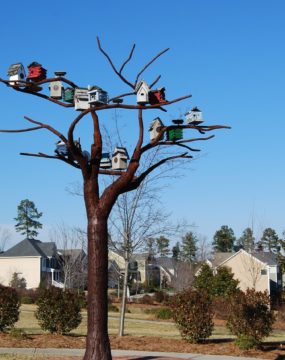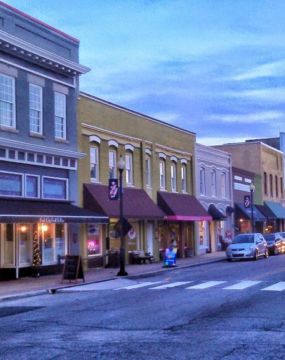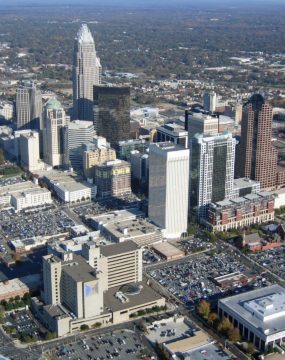Keep up with our latest demographic insights

From 2010 to 2017, 247 North Carolina municipalities experienced population decline – approximately 45% of all cities, towns, and villages in the state. This represents an increase of 22 municipalities since last year’s population estimates were reported. After accounting for municipalities growing at a stagnant pace – below the state growth rate of 8% - this figure rises to 427 in total. This means that over three-fourths of all places are declining or growing slower…

Topline data from the Census Bureau’s recently released 2017 municipal population estimates shows little change from previous years’ estimates. Municipalities located near major metropolitan areas continue to grow, while North Carolina’s rural communities continue to experience population decline. 255 NC municipalities, or 46%, have experienced either population decline or zero-percent growth since 2010. Adding municipalities with stagnant growth – i.e. those that grew slower than the state growth rate of 8% - this totals over…

New Geography recently reported on the extent of urban growth among the United States’ 53 major metropolitan areas (defined as having more than one million residents). Findings indicate that the majority of growth has taken place outside of the urban core, within the suburban and exurban regions of the metro area. North Carolina is home to two of these fifty-three major metropolitan areas: Charlotte and Raleigh. Using Wendell Cox’s City Sector Model, we explored the…

July 2015 to July 2016 was the largest year of population growth for the state of North Carolina for any single-year period since the last decennial Census (2010). This was also the case for 124 of North Carolina’s municipalities, including several with previously slim or even declining population growth. These places are labeled and represented by colored markers on the Story Map below. The table accompanying each point compares the numeric and percentage growth year-to-year…

Despite substantial growth in some areas of the state, a large portion of North Carolina has seen little to no population increase. Of North Carolina’s 553 municipalities, 225, or about 41%, experienced population decline from 2010-2016. An additional 192 reported growth that was lower than 6.4%, the state’s growth rate since 2010. In total, three of every four North Carolina municipalities have lost population or grown slower than the state since 2010. The northeast corridor…

The U.S. Census Bureau recently made its 2016 population estimates available, and the topline trends for North Carolina has maintained a nearly identical trajectory as 2015. Since the last decennial Census in 2010, North Carolina has seen its urban metropolitan areas grow consistently larger, while small, often rural municipalities have struggled to maintain population. North Carolina’s two largest metropolitan statistical areas – Charlotte-Concord and the Triangle (Raleigh-Durham-Chapel Hill) – have driven much of North Carolina’s…
In 2015, Charlotte and Raleigh were among both the top 50 largest cities in the United States and the top 50 in numeric population growth since 2010, according to recent estimates from the U.S. Census Bureau. As of July 1, 2015: Charlotte (827,097) was the 17th largest city in the United States, following Ft. Worth, TX, and ahead of Seattle, WA. It had the 9th largest numeric growth between 2010 and 2015, gaining more than…
Fifty-six percent of North Carolina residents (5.66 million) live in one of the state’s 553 cities, towns, and villages. Although five of the state’s municipalities are among the nation’s 100 largest cities—Charlotte (17), Raleigh (42), Greensboro (68), Durham (79), and Winston-Salem (88)—most are small. Half of North Carolina municipalities have fewer than 1,620 residents; nearly one in four have fewer than 500 residents. The majority of these places cities experienced population losses or slow growth…
Ten cities have passed the million population mark according to the U.S. Census Bureau’s 2014 municipal population estimates. With San Jose entering these ranks, California now has three cities with a million or more residents (Los Angeles, San Diego, and San Jose), tying Texas (Houston, San Antonio, and Dallas). Among the ten largest cities, population growth trends vary widely. Chicago gained a mere 82 new residents between 2013 and 2014 according to the estimates, while…
The turn of the century marked a key moment in North Carolina’s rural to urban transition: it was the first time in state history that a majority of residents were living in incorporated municipalities. Today, nearly 5.5 million individuals—56% of the state’s population—reside in one of the state’s 552 incorporated municipalities. These municipalities vary widely in key characteristics related to future growth and planning. The smallest—Fontana Dam Village in Graham County—contains 20 residents. At the…
Your support is critical to our mission of measuring, understanding, and predicting population change and its impact. Donate to Carolina Demography today.